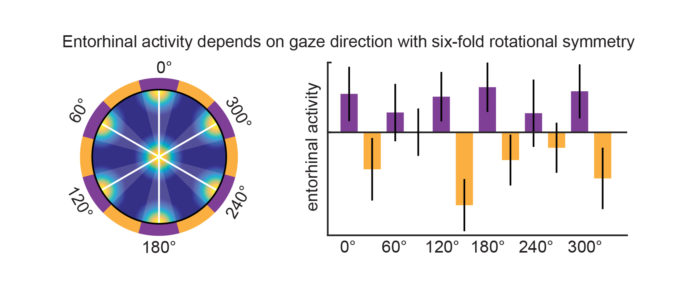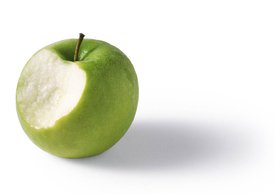
Brief News of Cognitive Navigation (2018-001)
1. Hexadirectional coding of visual space in human entorhinal cortex
by Matthias Nau, Tobias Navarro Schröder, Jacob L. S. Bellmund & Christian F. Doeller in DoellerLab, January 8, 2018

- Entorhinal grid cells map the local environment, but their involvement
How to get the best current activity state in continuous attractor network with population decoding?
Models of head direction and place cells often use some form of attractor network (Redish, Elga et al. 1996; Zhang 1996; Samsonovich and McNaughton 1997; Stringer, Rolls et al. 2002; Stringer, Trappenberg et al. 2002). Typically an array of cells …
How to implement the visual processing module for pose calibration in RatSLAM?
In this report, I summarized some key methods for visual processing module in RatSLAM or RatSLAM-based System. There are more than six approaches as following. By comparing and doing some practical experiments, I think that the intensity scanline profile and …
Understanding Cognition in the Human Brain Project
Imagine an apple — its greenness, sour taste and its fresh, crisp crunch; how does the brain create a representation of such an apple?

This is one of the questions the Human Brain Project (HBP) is asking. To better understand …
Brief News of Cognitive Navigation (2017-003)
1. How the brain keeps time
by Anne Trafton December 4, 2017

- McGovern neuroscientists discover networks of neurons that stretch or compress their activity to control timing.
- Timing is critical for playing a musical instrument, swinging a baseball bat, and
Brief News of Cognitive Navigation (2017-002)
1. This Autonomous Quadrotor Swarm Doesn’t Need GPS
By Evan Ackerman Posted 27 Dec 2017
- Researchers are working hard towards independent autonomy for flying robots,
- The University of Pennsylvania has been doing some particularly amazing development in this area,
Brief News of Cognitive Navigation (2017-001)
-
Neuroscience-inspired Data Compression
By Prof. Michael Milford Dec 21, 2017
- A project: An infinitely scalable learning and recognition network. The idea at the core of the project is to combine neuroscience and machine learning to develop new data compression techniques,
About
Brain Inspired Navigation Blog
New discovery worth spreading on brain-inspired navigation in neurorobotics and neuroscience
Recent Posts
- How hippocampal-entorhinal cognitive maps and cortical motor system represent action plans and their outcomes?
- How retrosplenial inputs drive visual representations in the medial entorhinal cortex?
- Whether and how neural dynamics of hippocampal neurons are influenced by the presence and actions of human experimenters?
- How the brain perform control and recalibration of path integration in place cells using optic flow?
- What’s the human neural dynamics of real-world and imagined navigation?
Tags
Categories
- 3D Movement
- 3D Navigation
- 3D Path Integration
- 3D Perception
- 3D SLAM
- 3D Spatial Representation
- AI Navigation
- Bio-Inspired Robotics
- Brain-Inspired Navigation
- Cognitive Map
- Cognitive Navigation
- Episodic Memory
- Excerpt Notes
- Flying Vehicle Navigation
- Goal Representation
- Insect Navigation
- Learning to Navigate
- Neural Basis of Navigation
- Path Integration
- Path Planning
- Project
- Research Tips
- Robotic Vision
- Self-Flying Vehicles
- Spatial Cognition
- Spatial Cognitive Computing
- Spatial Coordinate System
- Spatial Memory
- Time
- Unclassified
- Visual Cortex
- Visual Cue Cells
Links
- Laboratory of Nachum Ulanovsky
- Jeffery Lab
- BatLab
- The NeuroBat Lab
- Taube Lab
- Laurens Group
- Romani Lab
- Moser Group
- O’Keefe Group
- DoellerLab
- MilfordRobotics Group
- The Space and Memory group
- Angelaki Lab
- Spatial Cognition Lab
- McNaughton Lab
- Conradt Group
- The Fiete Lab
- The Cacucci Lab
- The Burak Lab
- Knierim Lab
- Clark Spatial Navigation & Memory Lab
- Computational Memory Lab
- The Dombeck Lab
- Zugaro Lab
- Insect Robotics Group
- The Nagel Lab
- Basu Lab
- Spatial Perception and Memory lab
- The Neuroecology lab
- The Nagel Lab
- Neural Modeling and Interface Lab
- Memory and Navigation Circuits Group
- Neural Circuits and Memory Lab
- The lab of Arseny Finkelstein
- The Epstein Lab
- Gu Lab (Spatial Navigation and Memory)
- Fisher Lab (Neural Circuits for Navigation)
- The Alexander Lab (Spatial Cognition and Memory)
- Harvey Lab (Neural Circuits for Navigation)
- Buzsáki Lab
- ……
